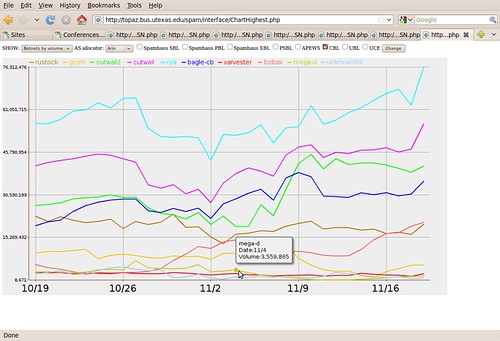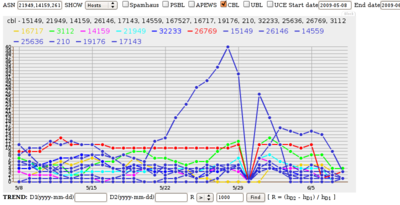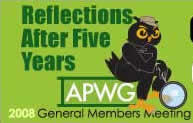 Peter Svensson gives an old and quite serious problem some mainstream press
in this AP story from 8 May 2010:
Peter Svensson gives an old and quite serious problem some mainstream press
in this AP story from 8 May 2010:
On April 25, 1997, millions of people in North America lost access to all of the Internet for about an hour. The hijacking was caused by an employee misprogramming a router, a computer that directs data traffic, at a small Internet service provider.The Pakistani incident is illustrated in the accompanying story and video by RIPE.A similar incident happened elsewhere the next year, and the one after that. Routing errors also blocked Internet access in different parts of the world, often for millions of people, in 2001, 2004, 2005, 2006, 2008 and 2009. Last month a Chinese Internet service provider halted access from around the world to a vast number of sites, including Dell.com and CNN.com, for about 20 minutes.
In 2008, Pakistan Telecom tried to comply with a government order to prevent access to YouTube from the country and intentionally “black-holed” requests for YouTube videos from Pakistani Internet users. But it also accidentally told the international carrier upstream from it that “I’m the best route to YouTube, so send all YouTube traffic to me.” The upstream carrier accepted the routing message, and passed it along to other carriers across the world, which started sending all requests for YouTube videos to Pakistan Telecom. Soon, even Internet users in the U.S. were deprived of videos of singing cats and skateboarding dogs for a few hours.
In 2004, the flaw was put to malicious use when someone got a computer in Malaysia to tell Internet service providers that it was part of Yahoo Inc. A flood of spam was sent out, appearing to come from Yahoo.
This problem has been known for a long time. Why hasn’t it been fixed? Continue reading





 Shing Yin Khor of Fox Interactive Media, which owns MySpace, gave an entertaining talk at APWG in which she gave a good case that MySpace has mostly eliminated phishing ads on MySpace and is busily suppressing other phishing.
Shing Yin Khor of Fox Interactive Media, which owns MySpace, gave an entertaining talk at APWG in which she gave a good case that MySpace has mostly eliminated phishing ads on MySpace and is busily suppressing other phishing.
